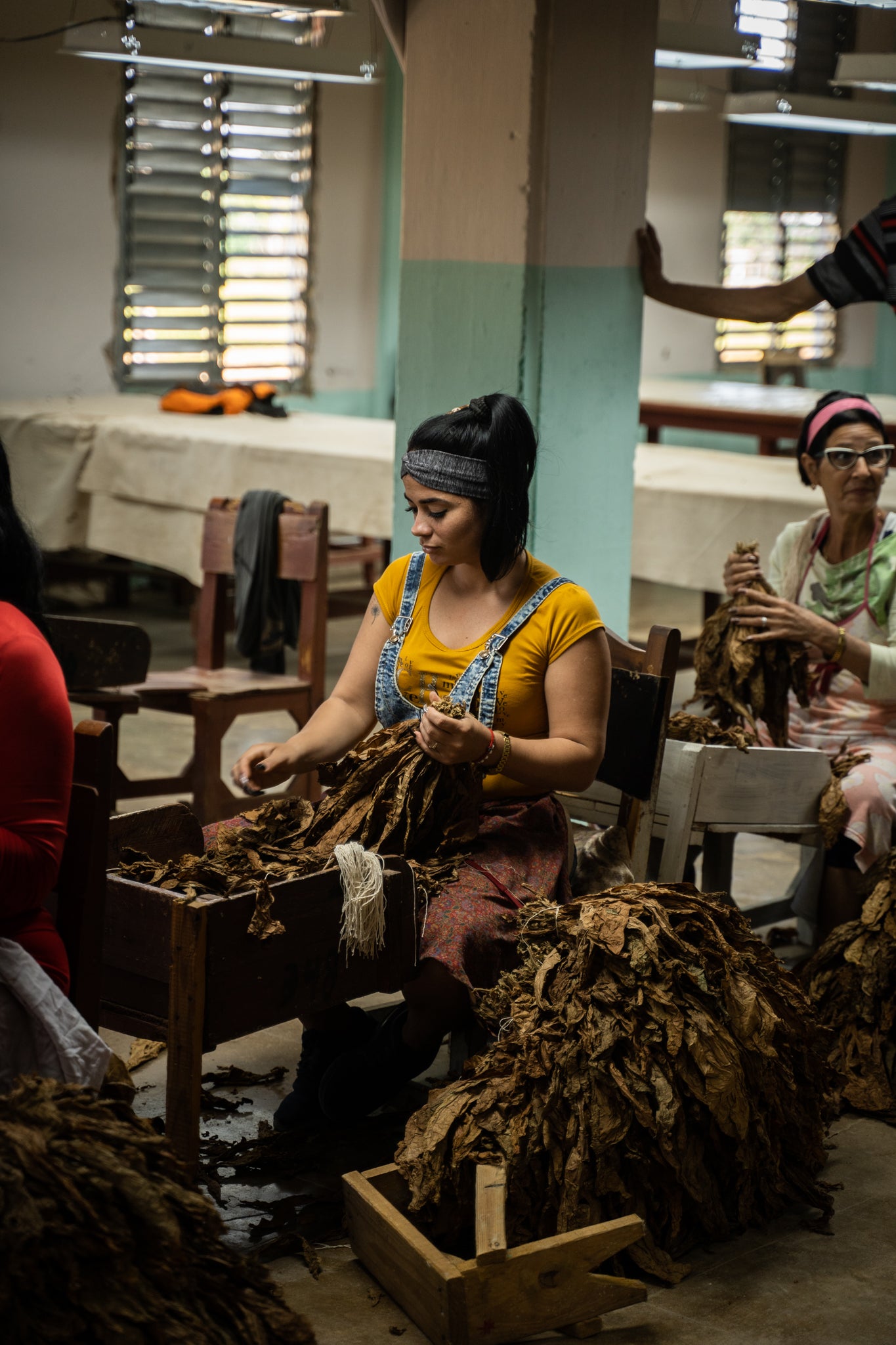The drive from Hotel Nacional to the famed Pinar del Río region is pretty much a straight shot from the Malecón and down the Autopista Este-Oeste. The drive in total takes around two hours, but given the fact we were part of several coaches heading South West, with multiple pick-ups en route, we added on an extra hour, arriving into the small and charming town centre just past 10am. Whereas Havana is densely populated and fast-paced (for an island, anyway), Pinar del Río is certainly what you’ve thought of when you call a town sleepy, with a population of just over 140,000, compared to the Cuban capital’s 2.3 million alone.

Initially named Nueva Filipinas by the Spanish, it changed to Pinar del Río in 1774, and the Vuelta Abajo region within the province quickly flourished as one of the best places to grow tobacco following the cigar’s increase in global popularity, and today it is often referred to as the Mecca for tobacco growing. So what makes the area so special? Well, it’s one of those places on earth where a combination of several things happened to come together at precisely the right time—high humidity, perfect temperatures and the right amount of rainfall—making the rich soil flourish, and whilst the majority of areas in Cuba grow tobacco, there’s nothing quite like this infamous area.

La Escogida: Wrapper leaves being bunched together in a bundle known in Spanish as Gavilla.

Each Gavilla roughly contains fifty wrapper leaves, which will be sufficient for 100 regular-sized cigars.

A Veguero preparing the wood to rebuild a curing barn, otherwise known as a Casa del Tabaco.
With cigar aficionados flocking to the capital from all corners of the world, a smaller contingent (though still very large, all things considered) became fast friends on the way to the land where cigars are born. The beautiful thing about the Festival del Habano being in February, and a prominent reason why, is that the tobacco plants are in harvest. Having spent the best part of ten months prior growing, between February and April these leaves are ready to transform into the sticks we hold so dear. Our trip was the first day in which Cuba’s heat really made itself known, with the temperature reaching 31 degrees by the time we stepped off the coach. With a group consisting of a collective from Melbourne, a few American aficionados and a handful of Europeans thrown into the mix, we were quickly ushered through the step-by-step processes of the plantation, to meet some of the workers and watch as the leaves go from drying, stripping, bundling, aging and fermenting and everything in between.

The curing process of tobacco consists in a first fermentation which will change its colour from bright green to 'Havana' brown.

Leaves are transported to the Casa del Tabaco.

Moja: wrapper leaves are hydrated before being sorted by colour and size.

Tercios: tobacco bales made from Yagua where wrapper leaves are stored and aged.

Second fermentation process for the tobacco.
Then, it was finally time to see the thing all cigar fans dream of — the tobacco fields. Our guide walked us through the field (which, thankfully, was diffused from the direct sun) in which we were witness to giant tobacco plants as far as the eye could see. But why explain it when I can simply show you:



Tobacco fields of Pinar del Río.
Following on from this was the hydrating, fermenting, aging and storing processes, which is an incredible thing to witness in itself. Timing is key for these imperative steps, as this will essentially be what makes the cigars special.



Inside the Pinar del Río plantations.
Sooner than we knew, we were back on the coaches on the way to Viñales—a thirty minute drive north—for a wholesome and hearty lunch hosted by Habanos, complete with live entertainment, crisp cervezas, a seemingly-endless raffle, and the Mural de la Prehistoria by Leovigildo González Morillo providing the backdrop. Having set off just shy of 7am, our coach didn’t pull up back into the picturesque Hotel Nacional driveway until 8pm that evening, so to say that we all slept extremely well that evening would be an understatement. Would we do again? In a heartbeat.

Mural de la Prehistoria, Viñales.




